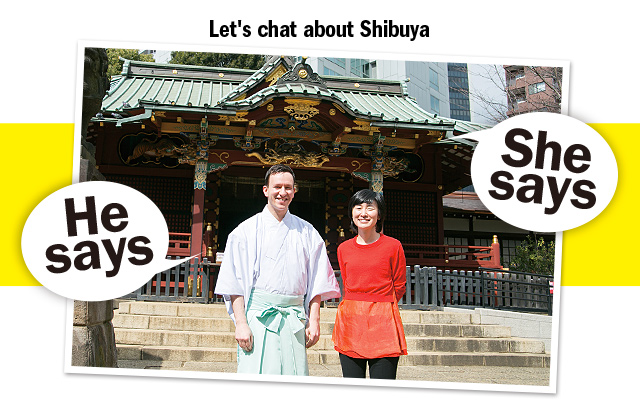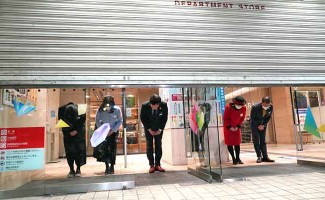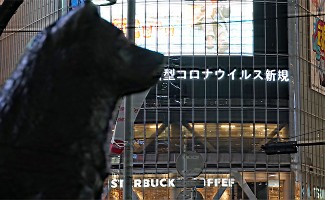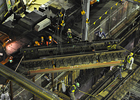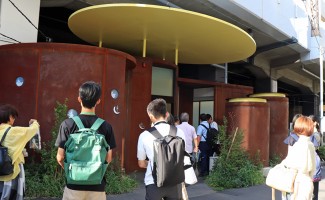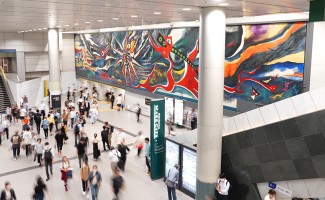Shinto priestFlorian WiltschkoAnd innovation specialistChiaki HayashiGet together to chat about the fascination and the future of Shibuya
Priest, and Wiruchiko-Florian, loft work representative director, Chiaki Hayashi talks about Shibuya of charm and future.
In order to talk about the future, we also need to unravel history. As a Shinto priest at the Konno Hachimangu Shrine in Shibuya, Austrian Florian Wiltschko is well versed in the history of Shibuya. Chiaki Hayashi, meanwhile, is a representative director at Loftwork and specialises in the creation of innovation through technology and design. We brought them together for a discussion about Shibuya’s past and future.
To talk about the future is also to Disclose the history. The responsible for the history of Shibuya, a priest of the historic gold king Hachiman Shrine, born in Austria Wiruchiko Florian. On the other hand, the responsible for the future of Shibuya, but Chiaki Hayashi of loft work representative directors who orchestrated the innovation with technology and design. Invited the two of them, we had talked about the past and future of Shibuya.
Hayashi:The first time I came to Konno Hachimangu Shrine was to attend a TED launch party. I was amazed at how it was solitary all the modern buildings, and also how the shrine was able to provide its support for global projects.
H: The gold king Hachiman Shrine, but I was for the first time came when the launch party of the TED has been carried out, was surprised to be between this building. Shrine is also that that will support the global planning.
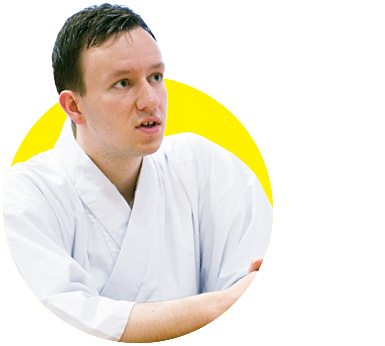
Wiltschko:This is the oldest wooden building in Shibuya Ward, so there is definitely a gaped bridged by holding a modern event like TED here. TED here. TED here. Hashiman, the god worshipped at this shrine, was considered to be the strongest god in the whole country, so was therefore chosen to Be the bodyguard of Buddha.
W: This building, in the oldest wooden building in Shibuya-ku, I think that there is a gap to open the contemporary events in such a place. But the shrine was originally, I came to accept new things. A good example is in Buddhism, once when introduced from abroad, not only accept, I'm a much was linked to the ancient Japanese god. Because Hachiman like that are enshrined in this shrine, as the strongest God in the whole country, I was elected to the body guard of a guest Buddha.
H:Is that right?
H: Do you was true?
W:Shrines are not historic ruins. Even Yes, proof of this is that large Buddhist temples always have a Hachiman Shrine on the side. Shrines closest to the large. Statue of Buddha in Nara is not actually the Kasuga Grand Shrine, but a Hachiman Shrine. They are very much still alive.
W: Yeah, always in the place where there is a large temple on the evidence, will be a Hachiman Shrine on the side. The nearest shrine to the Great Buddha of Nara is actually not the Kasuga Shrine, I know Hachiman. Jinja is not the ruins. Now also be required, it is used, the thing alive.
H:One of the things I am most interested in right now is history. I feel that in order to find out why something is done in a particular land, we need to connect with that land's history.
H: Actually I, I know history that is most interested in now. Why it means to do it in the land, if the steward history and a string of land, and I think in the wind that Do would disappeared immediately in many cases.
W:In that sense, a shrine is part of the land itself. Long ago, it was believed that each land had its power, and this strength was the god's power. This is why people would treat the gods with kindness and respect, in exchange for being allowed to use their precious land. And this is why they built the shrines.
W: In terms of that sense, the shrine is said to land itself. Long ago it was thought to have the power to every single land. The force is, that it is the power of God. To or there is a natural disaster, because God is angry. So the old man, instead of get to use the precious land of God, we have a contract that deal cherish God. So we were prepared God's house that shrine.
H:This is linked to why I decided to base my office in Shibuya. As I heard more about its history, I started thinking that maybe this is because the area has its own god.
H: This is I'm leading to talk of why I work in Shibuya, when I was thinking where to try to put the office, inspiration that, pleasant feel like I can work is if there is a company in this area there, I was in when I was walking down the Shibuya. It is, in the wind that I wonder if such because there are God's land, I thought I heard a story.
W:There are all sorts of energies at play here. I think the gods in Shibuya are extremely busy [laughs].
W: This area is in addition to the office, residential also commercial facilities. I because there are all energy. Shibuya of God, I think that busy. (Lol)
H:If we take the energy held by the land and include all the things that can not be articulated, and call it culture, I believe the place that will create the culture of the future will be Shibuya. Our company specialises in finding ways of using design and technology to create new things, and we believe that new things are not born from the same direction that everybody else is looking at.
H: If you, including those that can not be energy and the language of the land have referred to as a culture, I am, going to create a following of culture, I think that it is Shibuya. Of which is I'm a company to challenge or possibly can how new in design and technology, that, but the new ones, I'm everyone is not born in a place that is oriented in the same direction.









